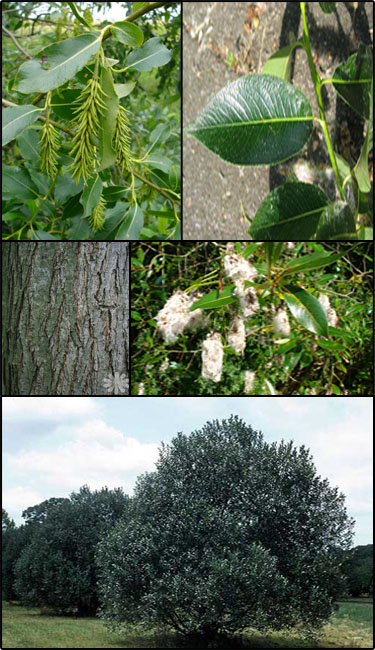Laurel willow (Salix pentandra)
 Description: Introduced to North America as an ornamental tree.
Description: Introduced to North America as an ornamental tree.Habit: Perennial, grows up to 25 ft tall, deciduous.
Leaves: Simple, alternate, toothed, lance-like to oblong, shiny dark green above, underside lighter green, not glaucous, occasional small stipules at base of blade.
Stems: Stiff; erect; green bark with a very rough texture.
Flowers: Dioecious, yellow in color, males have 5 stamens, arranged in a racemose catkin inflorescence.
Fruit and seeds: Seed pod, contains numerous seeds embedded in white down which aids wind dispersal.
Habitat: Native to Europe and central Asia. Found in swamps, bogs, woodlands.
Reproduction: By seed, bare root, or cuttings.
Similar species: Shining willow (Salix lucida).
Monitoring and rapid response: Top growth removal by mowing or cutting; effectively controlled using any of several readily available general use herbicides such as glyphosate or clopyralid. Credits: The information provided in this factsheet was gathered from the Plant Database UK, the Robert W. Freckmann Herbarium and the USDA PLANTS Database.
Individual species images that appear with a number in a black box are courtesy of the Bugwood.org network (http://www.invasive.org).Individual photo author credits may not be included due to the small display size of the images and subsequent difficulty of reading the provided text. All other images appear courtesy of Google (http://images.google.com).
Common Name: | Laurel willow |
Scientific Name: | Salix pentandra |
Family: | Salicaceae (Willow) |
Duration: | Perennial |
Habit: | Trees |
USDA Symbol: | SAPE4 |
